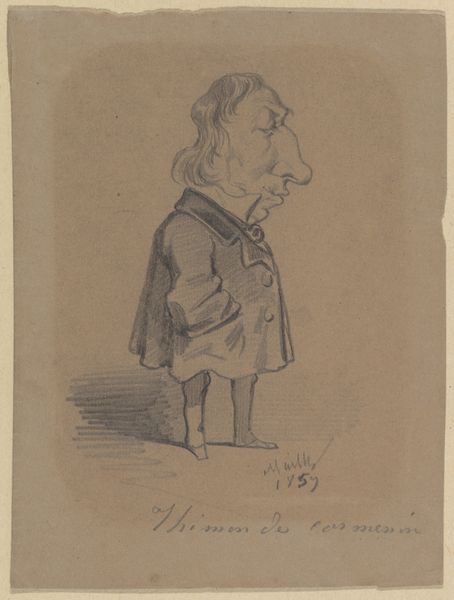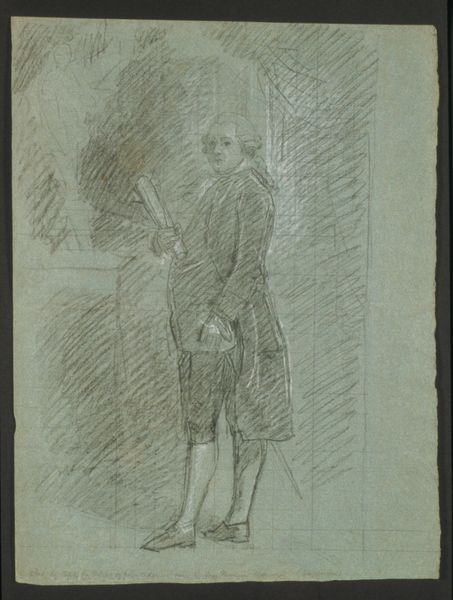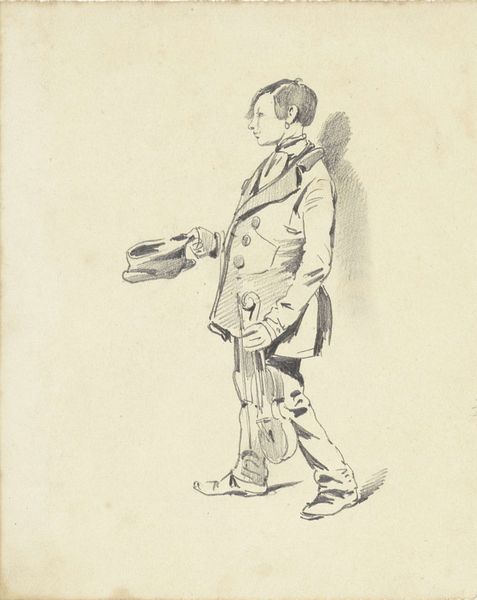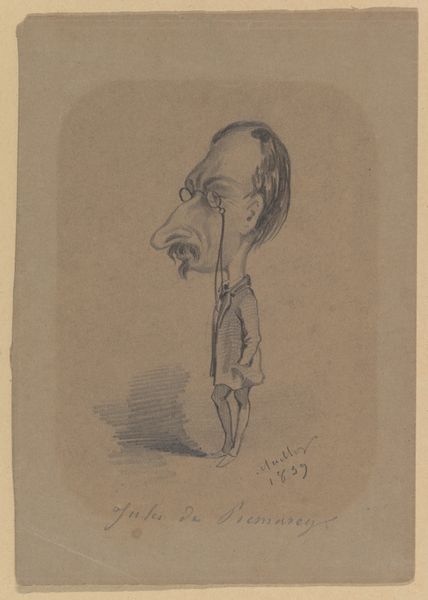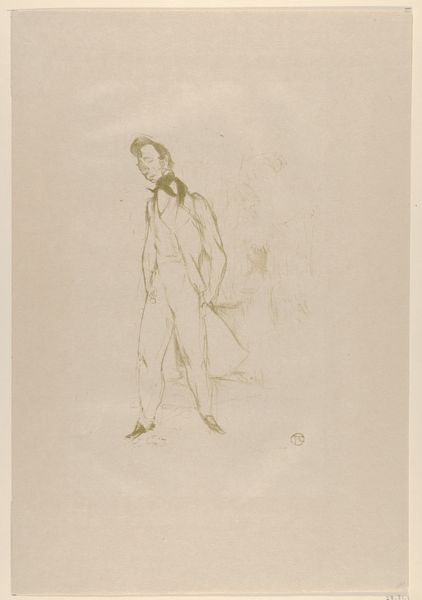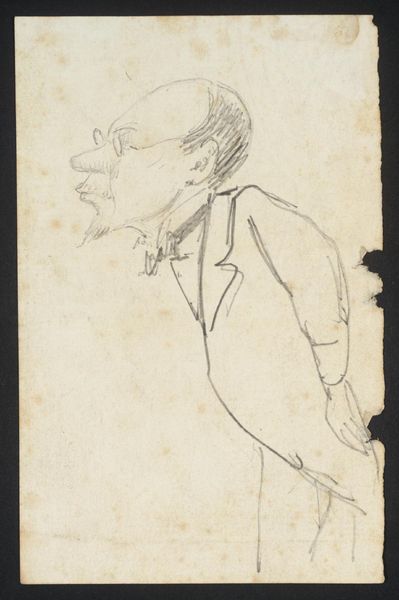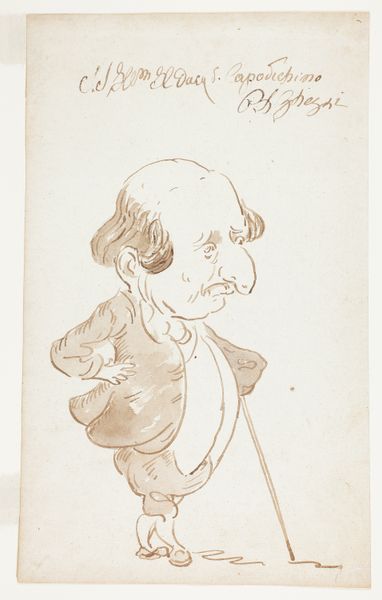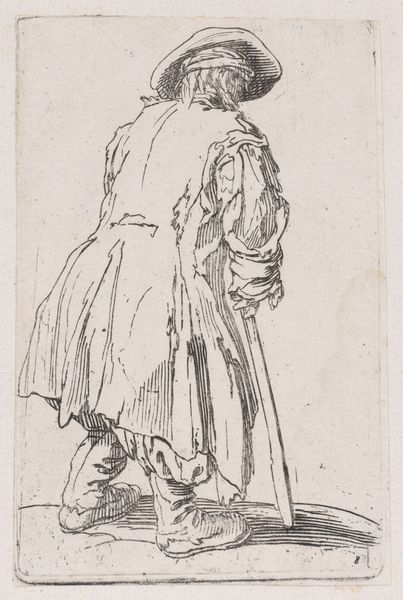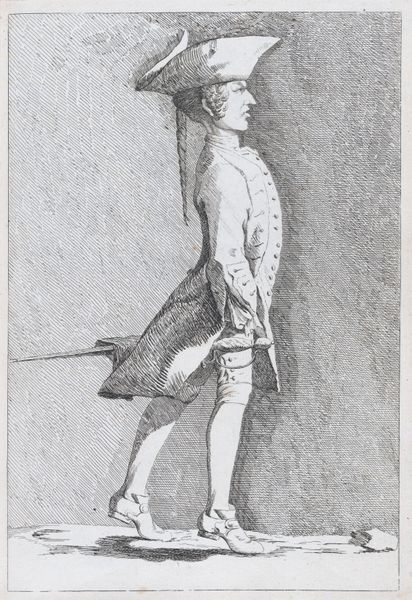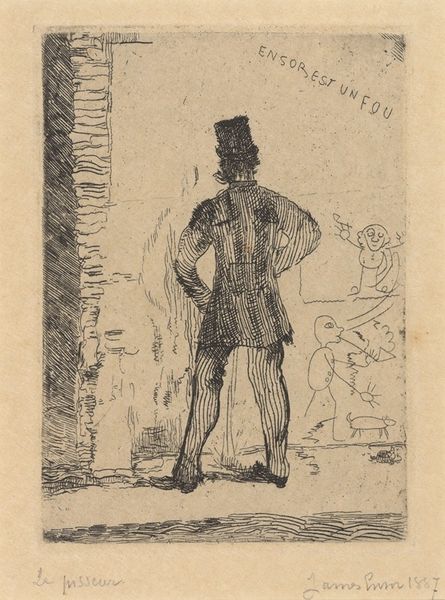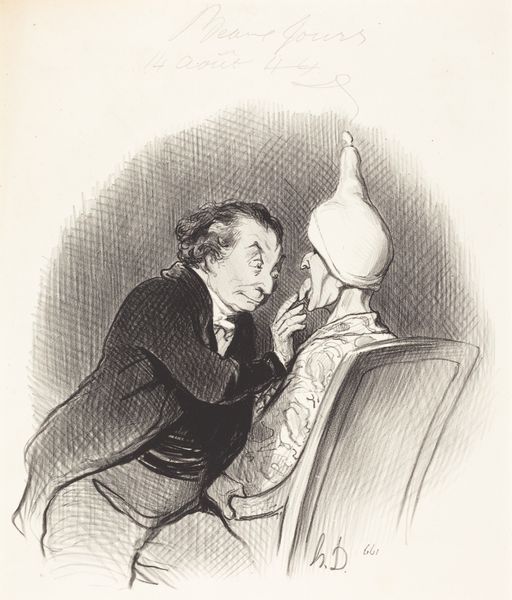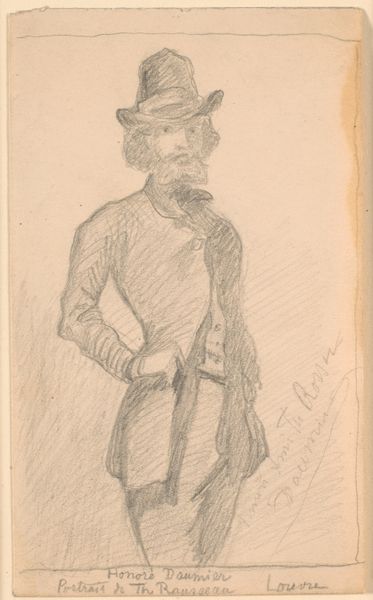
Dimensions: Sheet: 16 1/4 × 10 3/4 in. (41.3 × 27.3 cm)
Copyright: Public Domain
Curator: Ah, I'm immediately struck by the confident lines in this work. What do you see, Editor? Editor: There's something almost unnerving about the rendering, it seems very deliberate in the grotesqueness. The labor certainly seems concentrated on highlighting very particular… aspects. Curator: This is "Caricature of a Standing Man" by Hippolyte Mailly, created in 1857. What seems unsettling is typical of caricature. Exaggeration served as a means of social critique in art, pointing towards an underlying truth. Here, he used pencil, imbuing this gentleman with an exaggerated silhouette and shadow. Editor: You say "gentleman," I'm seeing a social performance crafted through dress - a high-collared jacket, the cravat. How much of that, how much of the artist's time and materials, was dictated by the need to portray status and how much freedom did Mailly really have when creating such a portrait? Curator: Precisely! The attire indicates an attempt to conform to societal expectations, while the caricature reveals the artifice, a satirical jab. The exaggerated nose mirrors a cultural history that relies on physiognomy to code ethnic and class stereotypes, though perhaps unconsciously on the artist's part. Editor: Mailly could be showing how commodities like tailoring shape, literally and figuratively, a man's public self, though perhaps I'm reading too much of my present back into the artwork. It makes me wonder how such materials and this mode of portraiture influenced the rise of modern advertising, or even public opinion about public figures. Curator: I'm thinking too about the theatrical gesture, hand tucked inside the jacket in that well known posture. We seem invited to laugh both at and with this figure, suspended between judgment and sympathy. Even that heavy shadow serves almost as a doppelganger! It really highlights how caricature became a way of exploring and codifying what it meant to be a man, of a certain class, during this time. Editor: The beauty of seeing it as a “doppelganger” forces me to consider labor relations: both what Mailly did and how the sitter perhaps spent a career. Art has always acted as a site of contested social practices, so examining it through the lens of material reality helps peel back layers of ideology and expectation. Thank you, as always. Curator: Indeed. And the persistence of the profile caricature echoes a deep and abiding urge to reflect, and perhaps even to lampoon, those in power, Editor!
Comments
No comments
Be the first to comment and join the conversation on the ultimate creative platform.
